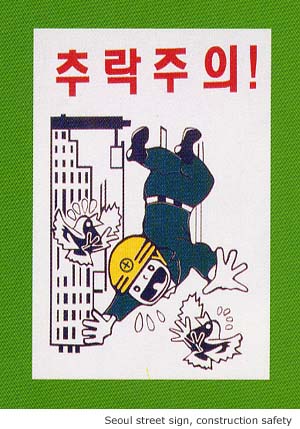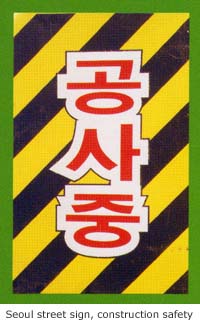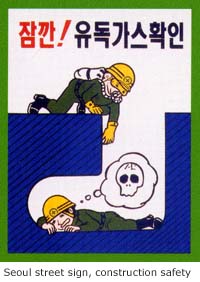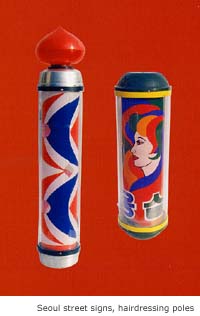
Perhaps you have noticed -- there is a football tournament occurring
in Japan and Korea. To capitalise on this the Setagaya Art Museum is currently
showing an exhibition of Korean popular culture, which focuses on Seoul.
Imitating the media overload encountered on the streets, the exhibition
is a broad snap shot of the city scene.
Fashion photographs, street signs, road cones, construction signs, a truck
load of newspapers and magazines, stickers for sexual services, packets
of free tissues, posters, billboards, movie advertisements, an architectural
model, war medals, wedding invitations, sports tickets, trophies, military
uniforms, street photos, news programs, TV dramas, a bus stop, street
mirrors, paper screens, an entire wedding room, music television, toys
ÉÉÉthe only thing that wasnt included was a little curatorial critical
choice.
After spending time in the room with seven TV monitors, with each playing
a different program from Korean television, it was a relief to watch the
dual video presentation by artists, Kim Jihyon, Korea and Umano Noriko,
Japan. They were almost the only "artists" presented in this exhibition.
Both were born in the late sixties and have specialised in new media work
and for this exhibition they each present a short video of their respective
capitals. These are projected at right angles to each other so that both
can be viewed and heard at the same time. In this instance, the overlapping
seemed very successful. The two productions worked off each other and
gained an extra energy.
Kims work begins with a 24-hour look at a busy traffic intersection,
Yoido. It then moves on to record each in a different style, about another
five districts in the city.
In the piece on Mye-dong, a young peoples area, she focuses her camera
on cell phones, while the sound track plays a medley of dreadful digital
ditties. For the residential district of Sanggye-dong, Kim shoots a continuous
vertical pan of an apartment block. The accompanying soundtrack takes
us inside these rooms to hear babies crying, people arguing and radios
blaring.
Umano, in her video work titled, "Boundless Everyday", uses a multi-media
menu to introduce her vision of Tokyo. Selections such as "Downtown" and
"Entertainment" are the prompts for video pieces of nightlife and fast
action rail journeys. Like sine waves out of phase, the visual pace of
one video seemed to coincide with a slower vision on the other and then
cris-cross back again. The stereoscopic vision gave a new dimension to
the productions and to the presentation of the two cities.
The two video works were by far the most interesting art in the exhibition,
which overall lacked focus. An excess of street stuff in an art gallery
does not make it more life like. On the contrary, the exhibition, by its
omission of artists and curators, reinforced the importance of their role
as mediators and commentators on culture.




